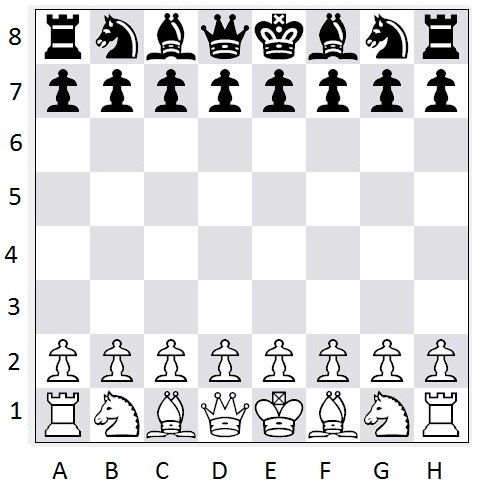
source: http://popkey.co/m/Oo04a-zach+galifianakis-numbers
Chess is a strategic board game that has evolved into international online gaming. You will need to think deeply (like Zach Galifianakis in the Hangover movie) and always plan ahead. Either playing against friends or in a tournament, the opening moves are among the most important for setting the tone of the game. At high level competition, chess is an extremely complex game with almost unlimited outcomes. With the rise of computers, the strategy of chess has entered into a new realm of computational analysis that uses algorithms to determine the best moves.
However, there is no need to worry! This website will help beginners in applying strong opening moves to gain an early advantage in the game. The tabs at the top of the page will cover some of the best chess openings for beginners according to chess.com. Chess.com is one of the most active and informative websites with respect to its player base and tutorials. Additionally, chess.com sponsors many events and hosts live games with the highest rated chess players in the world. The openings in this website include:
1) The Italian Game
2) The Ruy Lopez
3) Sicilian Defense
Understanding the Board Setup
The only requirement to begin playing chess is that you either need a board with all the pieces: 16 pawns, 4 knights, 4 bishops, 4 rooks, 2 kings, and 2 queens. Also, the more common method of choice is an electronic device with a chess application.

Figure 1 – Chess board with letter and number notation (source: regencychess.co.uk)
In this guide, I will usually refer to moves according the letter and number notation for the columns and rows, which is in reference to the white side of the board.
How the Pieces Move

Figure 2 – Showing how each chess piece moves on the board (source: http://artschoolellen.com/chess-rules.html)
Figure 2 illustrates the fundamental movements of each of the pieces on the board. The green asterisks show the potential moves of each piece and red x’s to illustrate a capture.
Pawn: The pawn can only move one square at a time and can only attack diagonally forward. However, there is an exception where the pawn can move two squares on its initial move (refer to green arrows on the black pawns in Fig. 2).
Rook: The rook can only move in straight lines and has no limit on the squares that it can move as long as the squares are not occupied.
Knight: The knight moves in “L” shapes and it can jump over other pieces (only piece that can do that).
Bishop: The bishop moves in diagonals and has no limit on the squares that it can move as long as the squares are not occupied.
Queen: The queen can move in any direction.
King: The king can only move one square at a time.
Observe: The kings cannot be directly next to each other because you cannot put yourself in check.
Developing Your Pieces
The development of your pieces is usually based on an initial strategy where you move the pieces from the starting position. Some of the general strategies for development include:
- Control the center of the board (d4, d5 and e4, e5)
Note: the four central squares of the board are the most valuable. This gives your pieces greater influence, more mobility, and restricts the movement of your opponent.
- Move pawns, knights, and bishops first for a foundation
- Initially, try to move a new piece with each turn
Caution: Repeated moves that do not add to development can hurt you long term
- Castle your king when possible
Castling – combination move where the king moves to one of the corners with the rook by its side. This is an effective move because it moves your king in a safer position and connects your rooks.
Note: You want to castle early in the game (usually within 10 moves)
Warning: This must be the king’s first move and there must be no other pieces in between the rook and the king.
Chess Outcomes
There are 3 outcomes to a chess game: (1) checkmate, (2) draw, and (3) stalemate.
(1) A checkmate ends the game because the opponent’s king does not have any safe squares to move on.
(2) A draw ends the game because both players agree or by threefold repetition (both players make the exact same move 3 times).
(3) The stalemate is a special case of a draw and occurs when the player cannot make a move and is not in check.
Let’s Move On
Understanding the basics of the chess openings and how to respond to initial threats can take around 30 minutes. However, really understanding the entire game of chess can take months to years because of the shear number of possibilities. Now that you know some of the basics to chess, let’s go into more detail into specific openings of the most important 5-6 moves in the beginning of the game.
Quick links: